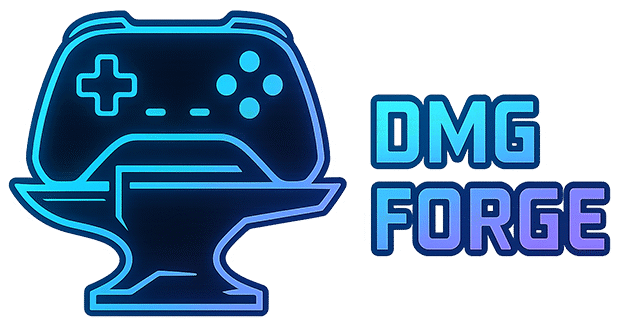If you’re building projects all by yourself, juggling design and programming can feel like running two marathons at the same time. I’ve been there plenty of times. Designing what the user sees while also handling all the code that powers it isn’t easy. For solo devs, this balancing act is common, especially if you’re building web or game projects from the ground up. In this article, I’ll share ways to handle both worlds, what to keep an eye out for, and break down some practical tips for keeping everything moving forward—even when the workload seems massive.

Can You Really Be a Solo Developer?
Working solo as a developer isn’t some far-off dream. Loads of people do it; whether freelancing, building indie games, or starting an app on their own. Some even turn small projects into full businesses, or just have fun launching their own creations. The big challenge isn’t so much ability as it is time management, motivation, and wearing every hat in your virtual studio. Things can feel overwhelming sometimes, but it’s totally possible. Plenty of games, apps, and websites you love were brought to life by just one or two people. Being a solo dev means you’re not just coding; you’re also in charge of design, UX, marketing, and all the little pieces in between. The upside? You get to call every shot and mold the project however you want.
What Do You Call a Solo Game Developer?
If you’re building a game by yourself, you’ll hear a few labels get thrown around. Most people just say “solo developer” or “indie dev” for short, and sometimes you’ll spot “solodev” or “oneperson studio” too. In the indie game world, the label “indie game developer” shows up a lot, no matter if you’re working alone or running a tiny team. Huge examples like ConcernedApe (Stardew Valley’s creator) proudly put their own name out there along with the solo dev title. The important part is that solo devs handle every role: coding, art, sound, and game design. The indie game industry really embraces this hands-on style, so you’ll fit right in using any of those titles.
Can One Developer Really Make a Whole Game?
It’s not just possible—it’s been done, and there are loads of stories to prove it. Some of the most beloved indie games came from a single developer doing everything from start to finish. Stardew Valley, Axiom Verge, and Undertale all kicked off as solo projects. That means one person wrote the code, created the art, designed the gameplay, and even handled the music.
When you take on every part of a game by yourself, every feature, bug fix, and detail passes through your hands. It’s a massive task, and it often means your project will take longer than if you had a team backing you up. But by breaking down the work into smaller pieces and staying consistent, you absolutely can get a project from idea to reality. Programs like Unity, Godot, and GameMaker Studio exist to help solo devs or small teams with frameworks, visuals, and assets that make the workload doable. Online tutorials, open source code, and dev communities are also incredibly helpful when you hit a roadblock.
How Long Does It Take to Make a Game Alone?
This one depends on a bunch of factors—but solo projects almost always take longer than you think. Simple puzzle games or platformers could take a few months if you use prebuilt assets and keep your idea basic. More ambitious games can stretch into years. Stardew Valley, for example, took ConcernedApe around four and a half years to finish. Axiom Verge took several years too, and that’s pretty standard for larger solo efforts.
Most solo devs do this in their spare time, so coding evenings and weekends makes the timeline stretch further. One key: keep your project modest and realistic. Trying a small, scoped project first (like a basic puzzle or singlelevel platformer) helps you see progress and stay motivated. As you level up, you can tackle bigger ideas with more confidence and skill.
Can You Teach Yourself Game Development?
Definitely—you can teach yourself, and most solo or indie devs are self-taught. The internet is packed with resources for learning both code and design, for games or apps. Platforms like YouTube, freeCodeCamp, Coursera, and Udemy offer tons of courses that guide you through each piece: from basics to advanced concepts.
When I started, I juggled written guides, video tutorials, and lots of trial and error. What helped most was just jumping in, playing with small projects, and getting feedback from online forums like Stack Overflow, Dev.to, or the Unity and Godot communities. People there love helping newcomers who show genuine effort.
If you’re new, it helps to pick a tiny starter project—a web app, mini tool, or small game—and build up from there. Breaking your learning into small bits keeps you moving forward and stops you from getting overwhelmed.
Managing Design and Programming as a Solo Dev
Finding the balance between code and visuals is one of the toughest things for solos. When I bounce between writing algorithms and tweaking colors, I’m always shifting gears. Over time, I’ve picked up some tricks to keep both sides moving ahead:
- Work in Blocks: Set aside chunks of time for design, then move to coding after a short break. Don’t force your brain to format JSON and design icons at the same time.
- Use Templates and Design Systems: Start the visual side with UI frameworks like Material UI or Bootstrap, or even draw ideas from layouts on Dribbble. This makes building the look faster, so you never freeze at a blank canvas.
- Prototype Quickly: I sketch out rough screens with tools like Figma or paper before writing code. It’s much easier to catch layout problems early, which saves time rewriting code later.
- Keep Your Code Clean: When you’re hopping between JavaScript, CSS, and art assets, neat and organized code makes it less painful. Add comments and split your files smartly—future you will appreciate it.
- Function First, Polish Later: I focus on just making things work at first, then circle back to visuals at the end. Getting lost in details too early can drag you down and slow the entire process.
Some stages will be tougher, and if design isn’t your strongest suit yet, look for assets, icons, or music from open sources like OpenGameArt or itch.io’s asset stores. The web is bursting with free or paid resources you can use (always check licenses) to fill in the gaps until you feel more comfortable making your own.
Challenges Every Solo Dev Should Expect
- Creative Block: Sometimes you just feel out of ideas. I find that saving screenshots, browsing inspiring design sites, or even playing other games can spark a fresh take.
- Staying Motivated: Without a team to cheer you on, progress can stall. I set little goals, post small updates online, and get involved in dev forums for that extra push.
- Bugs and Burnout: Fixing bugs solo is tough—and can be draining. Stepping away for breaks or changing tasks helps keep things fresh, and reminding yourself that every dev faces these slumps keeps morale up.
- Scope Creep: Adding features or changing your goals mid project is tempting. Keep your first version simple, jot down new ideas for later, and only expand after you’ve got something working.
I always build in breaks and set reasonable goals based on the time I have. Tools like Trello or Notion help break down big jobs into bite-sized to-dos, so you don’t freeze up looking at the whole mountain at once.
How Much Can an Indie Game Developer Make?
Solo indie dev income is all over the map. Some small games earn very little, but a winner can bring in a lot. Gamasutra’s indie dev surveys show that most solo games make under $10,000; only a handful reach six figures or more. Of course, smash hits like Stardew Valley and Undertale prove you can make it big, but it often boils down to having the right mix of a good idea, quality execution, timing, and a dash of luck.
Your revenue may come from sales, ads, crowdfunding, or contract work alongside your projects. My advice: treat your first project as a learning opportunity—use it to build skills and get a feel for release cycles, marketing, and feedback before hoping for a financial home run.
If you want to dig into this more, sites like Gamasutra and Indie Hackers offer breakdowns on income, industry patterns, and real-life stories of both hits and misses in the indie world.
Quick Tips for Solo Design + Dev Success
- Start Small: Choose an easy-to-manage project and finish it. Even tiny, complete projects teach you so much more than half-finished big ideas.
- Document Everything: Keep notes, screenshots, and a changelog. It’s a lifesaver when you want to track progress or debug later.
- Use Tools that Work for You: Don’t panic about expensive or “pro” gear—sometimes the simplest setup is best for staying productive.
- Share Early, Share Often: Post about your progress in dev communities to get feedback and fresh motivation.
Got Questions? Here’s What Solo Devs Ask Most
Is it possible to be a solo dev?
Yes, absolutely. With planning, a willingness to learn, and some persistence, lots of people build software and games entirely on their own.
What is a solo game developer called?
You’ll often hear solo dev, indie dev, or occasionally “oneperson studio.” Any of those work.
Is it possible to develop a game by yourself?
Yes. Many iconic and successful games started as solo efforts. Just remember to keep the scope realistic for your resources.
How long does it take to develop a game solo?
Small projects might wrap up in a few months if you stick to them. Bigger or more complex games could take years, especially when working in your spare time.
Can I be a self-taught game developer?
Absolutely. The huge library of online tutorials and resources makes it possible for anyone motivated to pick up the skills.
How much does an indie game developer make?
It varies a lot. Many solo devs make less than $10,000 per project, but a few see higher results with just the right game idea and timing.
